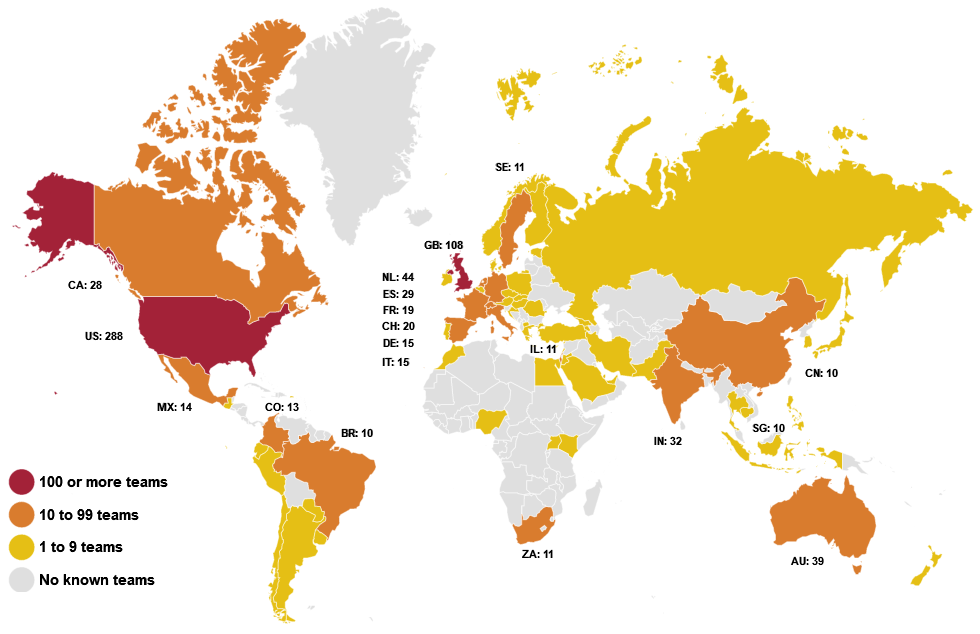Article by Steve Wendel: “It’s hard to miss the rapid growth of our field: into new sectors, into new countries, and into new collaborations with other fields. Over the years, I’ve sought to better understand that growth by collecting data about our field and sharing the results. A few weeks ago, I launched the most recent effort – a survey for behavioral science & behavioral design practitioners and one for behavioral researchers around the globe. Here, I’ll share a bit about what we’re seeing so far in the data, and ask for your help to spread it more widely.
First, our field has seen rapid growth since 2008 – which is, naturally, when Thaler and Sunstein’s Nudge first came out. The number of teams and practitioners in the space has grown more or less in tandem, though with a recent slowing in the creation of new teams since 2020. The most productive year was 2019, with 59 new teams starting; the subsequent three years have averaged 28 per year[1].
Behavioral science and design practitioners are also increasingly spread around the world. Just a few years ago, it was difficult to find practitioners outside of BeSci centers in the US, UK, and a few other countries. While we are still heavily concentrated in these areas, there are now active practitioners in 72 countries: from Paraguay to Senegal to Bhutan.

Figure 1: Where practitioners are located. Note – the live and interactive map is available on BehavioralTeams.com.
The majority of practitioners (52%) are in full-time behavioral science or behavioral design roles. The rest are working in other disciplines such as product design and marketing in which they aren’t dedicated to BeSci but have the opportunity to apply it in their work (38%). A minority of individuals have BeSci side jobs (9%).
Among respondents thus far, the most common challenge they are facing is making the case for behavioral science with senior leaders in their organizations (63%) and being able to measure the impact of their inventions (65%). Anecdotally, many practitioners in the field complain that they are asked for their recommendations on what to do, but aren’t given the opportunity to follow up and see if those recommendations were implemented or, when implemented, were actually effective.
The survey asks many more questions about the experiences and backgrounds of practitioners, but we’re still gathering data and will release new results when we have them…(More)”.